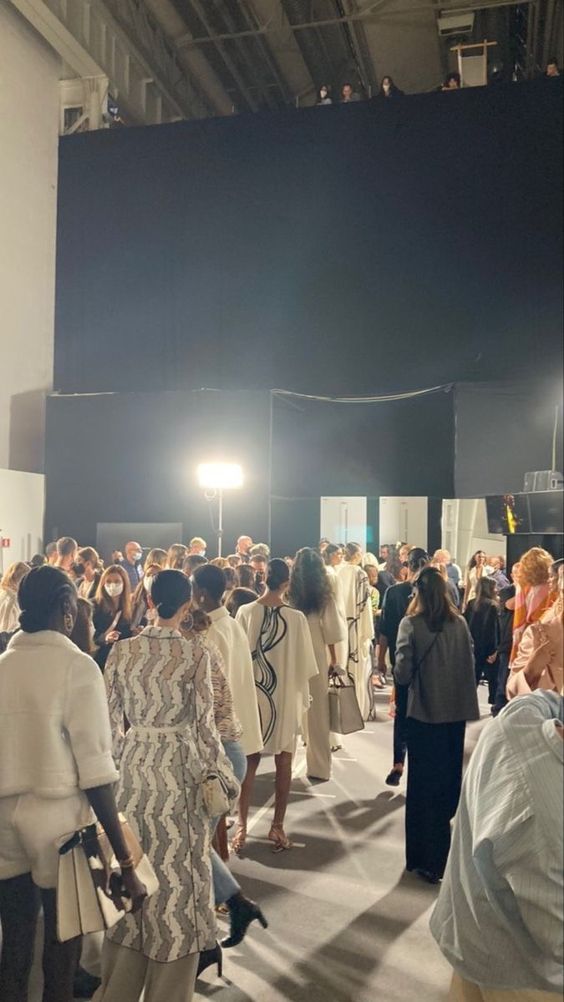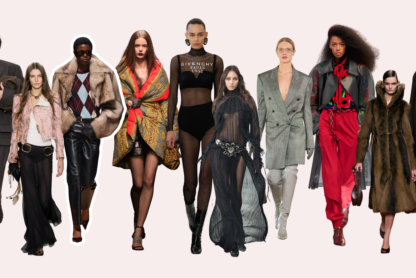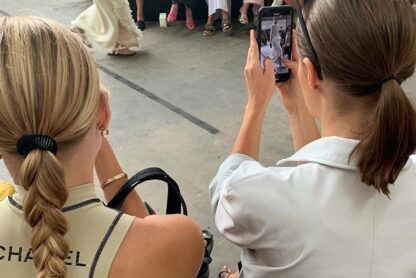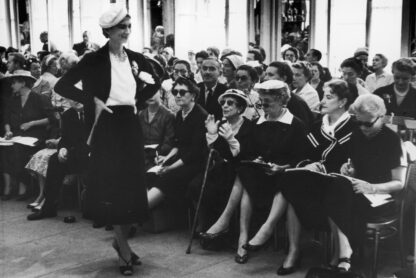Fashion Week is a long awaited moment for fashion critics, editors, buyers, and all fashion enthusiasts around the world. The main shows happen in the big four – New York, London, Milan, and Paris, but other cities like Tokyo, Sao Paolo, Miami, Berlin, Copenhagen, Madrid…also showcase the latest creations of local designers.
With so many runways held during the year, it’s easy to get lost who shows where and what type of collections: Ready-to-wear, Couture, Cruise/Resort, Pre-fall, and Men’s Fashion Week.
Each type of fashion week focuses on specific categories of clothing and design, catering to different market segments and creative expressions.
So in this article, we are guiding you through what are the different fashion weeks.
What Are The Different Fashion Weeks
The big four fashion weeks
The four major fashion weeks are:
New York Fashion Week
London Fashion Week
Milan Fashion Week
Paris Fashion Week
These fashion weeks are held twice a year in February and September. Each of these lasts approximately one week(hence the name fashion week), during which designers, brands, and fashion houses present their latest ready-to-wear collections through runway shows, presentations, and other events.
Ready-to-wear (prêt-à-porter)
Ready-to-wear Fall/Winter Collections are presented in February/March, and Spring/Summer Collections are presented in September. Yes, the fashion industry presents a collection 6 months before it hits stores.
Most of the clothes we buy are ready-to-wear, and fashion brands often use the term “Ready-to-wear” to refer to new collections. If we take it word by word, Ready-to-wear, or Prêt-à-porter in French, means that the product is something we can purchase and wear immediately. So most of the clothes seen on ready-to-wear runways will be available in stores. (Not all of them will be available in stores as some pieces are just used during a fashion show for the sole purpose of showcasing the designer’s creativity, driving attention to the collection and raising brand awareness, or giving a preview of the collection that will be available in stores)
Contrary to the Haute Couture collections that we explain below, which are custom-made and hand-made, so not mass-produced and without standard sizes, Ready-to-wear collections are mass-produced by factories according to standardized sizes (for instance, from XS- XXXL), and sold in a finished state.
February and September are officially the time of the year when brands present their womenswear collections but in the past years some brands have presented their menswear and womenswear collections altogether.
Menswear Fashion Week
Men’s fashion week Ready-to-wear fashion week but focused on menswear. It usually takes place in January (Milan and Paris), February (New York), June (London, Milan, and Paris), and September (New York). Dior Men, Loewe, Kenzo, Loro Piana, Balmain, Saint Laurent, Hermes… all the big houses hold menswear shows.
You might have noticed that besides the big four fashion weeks happening in February and September, your favorite influencers or magazines attend and cover fashion shows in other times of the year. Well, this is because Ready-to-wear collections are not the only ones created and presented by brands. There are other collections presented during the year through runways and other presentations. Let’s see which are these.
Haute Couture Fashion Week
In Paris, together with the February and September ready-to-wear fashion weeks, some brands present their Haute Couture collections twice a year in January and July.
In January, brands showcase the Spring/Summer Haute Couture collections, while in July, brands present their Fall/Winter Haute Couture collections.
Haute Couture, which translates literally from French “high dressmaking”, is a division of the fashion industry organized by the trade association named the Fédération de la Haute Couture (formerly the Chambre Syndicale de la Couture). High fashion Houses produce two collections a year and make exclusive, customized versions of the designs for individual clients according to their specific measurements. Haute Couture collections are the most prestigious and luxurious that exist in the fashion industry. The materials are precious, and everything is studied in detail. All the pieces are constructed by hand from start to finish, made from high-quality fabrics, and sewn with extreme attention to detail and finished by the most experienced and capable sewers. It takes about 200-500 hours or even more to create one of these custom-made garments! And yes, this comes at a price even though at that level, the price tag or budget is not even considered. Certain pieces are valued at upwards of $100,000. In the couture sales salons, designs are made to order. Clients are able to choose things such as the weight of the yarns used in garments according to where they live. Which, as you can probably say, is not possible in any other ready-to-wear collection in fashion where you just pick the clothes ready for you in stores.
Not every fashion brand can produce a couture line. Brands must meet specific criteria set forth by the Chambre Syndicale de la Haute Couture in Paris, the governing body that regulates and defines Haute Couture.
If you want to learn more about Haute Couture, we invite you to read this article to find out what it takes to become part of this elite group of couturiers, who was the first couture designer, and more.
Pre-Collections
In between the two main seasons Spring Summer and Fall Winter, brands nowadays to keep up with the demand of customers, release other collections throughout the year. These pre-collections are like a prologue to the main Fall and Spring collections. Released just before Fall and Spring, they offer mid-season pieces and thus help shorten the wait time for next season when the main Fall and Spring lines will drop in stores. This can be practical for customers when during some summer days the nights feel too cold, and in the last winter weeks when it starts getting warmer.
The pre-fall season usually consists of pieces that are conceptually and aesthetically similar to the main fall/spring collection coming up. They offer fashion editors and buyers a preview of what to anticipate in a designer’s official fall collection, allowing them to plan their editorial and commercial efforts ahead of time.
However, Pre-Fall is a bit more commercial than the main season designer collections. The reason for this is because the season changeover can be loss-making for fashion brands, with the spring collection having gone on permanent sale while fall items haven’t yet been delivered to stores; same when the fall collection goes on sale and spring pieces haven’t dropped in stores yet. Therefore, brands find in Pre-fall collection an opportunity to drive sales and fill the gap in the retail market.
Cruise/Resort Fashion Week
A Cruise collection – also known as “Resort” “Holiday” or “Pre-Spring” – is another mid-season collection that brands show between two main seasons – Spring/Summer and Fall/Winter. May and June are the two months we see Cruise Shows hit the catwalks. They usually comprise relaxed silhouettes, lightweight fabrics, and statement swimsuits.
The cruise collection was originally designed for wealthy cruise guests vacationing around the Mediterranean Sea during wintertime who needed a whole new wardrobe for their mid-season travels to climates different from their own. Stores were full of winter items at this time and a need for swimwear and a holiday wardrobe was missing from the racks. So fashion houses like Gucci, Chanel, Dior, and others, brought cruise collections to life.
Nowadays, with the competition from fast fashion brands that release a new drop every week, the cruise collection is an opportunity for luxury brands to inject an entirely new must-have mid-season collection into the market and charm their global consumers who consistently travel or live in sunny climates all year round.
Unlike the two main fashion weeks that happen in fashion capitals, there are fewer restrictions with a Resort collection. Brands are free to show on their own terms outside of the industry-regulated fashion week schedules and locations.
International Fashion Weeks
Besides the big four where most of the shows mentioned above are happening, there are also many other shows held across the world.
Copenhagen Fashion Week
Madrid Fashion Week
Berlin Fashion Week
Stockholm Fashion Week
Tokyo Fashion Week
Shanghai Fashion Week
Sao Paolo Fashion Week
Mexico City Fashion Week
Melbourne Fashion Week
Just like the big four, these fashion weeks have ready-to-wear (womenswear and menswear), and some also show Resort collections (like Australia Resort 2023 this year)
Bridal Fashion Week
Bridal Fashion Week is typically a bi-annual event held in April and October focused on showcasing the latest bridal fashion collections. The biggest ones are the New York Bridal Week and Barcelona Bridal Fashion Week.

Miami Swim Week
The Miami Swim Fashion Week is traditionally held in mid-July and showcases swimwear and beachwear collections.

Now you know what are the different fashion weeks and when they are held. We hope this gives you more clarity and will help you navigate the fashion week calendar easier.
If you are interested in the topic, we have other pieces about Fashion Week:









